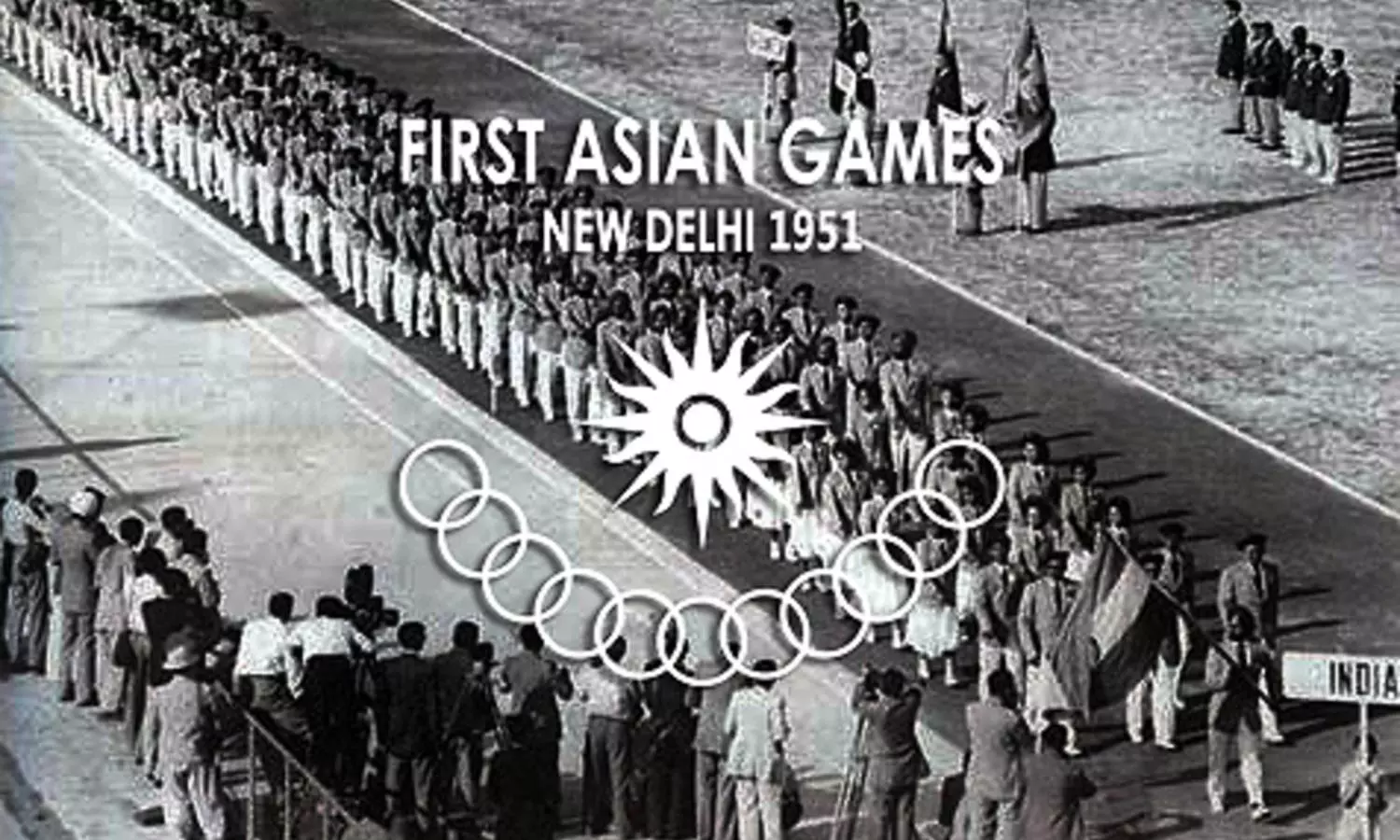Asian Games
How the Asian Games began: Revisiting the dawn of an India-led sports movement
It was India at the centre of it all as the Asian Games started a new era in Asian sports in 1951. Vietnam, Korea and Pakistan missed out for political reasons, while China did not send entries in time.

The Indian contingent marches by during the opening ceremony of the 1951 Asian Games.
The Asian Games, often termed the 'mini-Olympics', will enter its 19th edition when Hangzhou hosts the holistic and prestigious event from September 23. This edition will feature more than 50 sports and will witness more than 45 Asian nations participating. This is almost unrecognizable from the first edition of the Asian Games which took place in New Delhi, India. More than seven decades ago, it was India at the epicentre of it all as an Asian sports revolution started.
Here's a look at how the iconic sporting event came to fruition.
The Far Eastern Championship – A foundational pillar
The Far Eastern Championship was a predecessor to the Asian Games. The inaugural edition of this Championship took place in Manila, Philippines in 1913.
It witnessed the participation of six nations – China, Hong Kong, Philippines, Japan, Thailand and the Federated Malay States. India (1930 only) and Dutch East Indies (only 1934) participated in later editions. The Championship witnessed ten editions and was discontinued in 1938.
Eventually, at the 1948 London Olympics, Philippines and China were keen to revive the Far Eastern Championship. It was Indian International Olympic Committee representative Guru Dutt Sondhi who suggested not to limit it to solely East Asia and proposed a more diverse and grand competition to provide a platform for Asia to display its sporting prowess.
That competition came to be known as the Asian Games. The Asian Athletic Federation (successor to the Olympic Council of Asia) was officially formulated on 13 February, 1949.
The birth of the Asian Games
The Asian Games was an opportunistic moment for a young and independent India to truly announce itself to the global stage and pioneer the symbolic message of a united and diverse Asia.
The very first edition of the Asian Games took place from 4 March, 1951 to 11 March, 1951 in New Delhi. Indian President Rajendra Prasad officially declared the Games open at the Dhyan Chand National Stadium.
READ | When Cricket Club of India donated money for 1951 Asian Games
There were eleven competing nations – Afghanistan, Burma (Myanmar today), Ceylon (Sri Lanka today), India, Indonesia, Iran, Japan, Nepal, Philippines, Singapore, and Thailand.
A total of 489 athletes competed at the inaugural Asian Games with India embodying the biggest contingent (151 athletes) and Sri Lanka sending the smallest contingent (3 athletes)
The 1951 Asian Games featured only six sports – athletics, basketball, cycling, football, swimming and weightlifting.
The Asiad also featured a non-medal ‘Mr Asia’ bodybuilding event which Parimal Roy of India ended up winning.
India Post issued a special stamp to commemorate the inaugural Asian Games.
Glory and triumph
A total of 169 medals were awarded.
Singaporean swimmer Neo Chwee Kok became the first athlete to ever win an Asian Games gold medal. He would end up as the most decorated athlete at the 1951 Asian Games as well, with his gold medal in the 400m, 800m, 1500m and 4x100m relay events.
India’s first Asian Games gold medal came due to the heroics of Sachin Nag in the 100m freestyle swimming event.
Meanwhile, Lavy Pinto was the only Indian athletes with multiple medals at the 1951 Asian Games. He tasted gold in the 100m and 200m sprint.
India secured a total of 51 medals – 15 gold, 16 silver and 20 bronze. But had to settle for second place on the medal tally as it Japan who topped the table and clinched 60 medals – 24 gold, 21 silver and 15 bronze.
India and Japan were in a league of their own as Iran, who sat in the third position on the medal tally, secured only 16 medals. Coincidentally, India and Japan are the only two nations to win gold at each edition of the Asian Games.
Breaking down the symbolism
The Asian Games symbol of a bright red sun with sixteen rays and a white circle at the epicentre is meant to denote the ‘glimmering and warm spirit of Asian people’. The Asian Games motto “Ever Onward” stemmed for Guru Dutt Sondhi.
Furthermore, an Asian Games mascot would first be introduced by India when the Asian Games returned to New Delhi after a hiatus of 31 years in 1982. Apu, the Elephant was the first mascot of the Asian Games.
The first ever Asian Games mascot.
Notable exemptions
All Asian nations were officially invited for the 1951 Asian Games. But Vietnam and the Union of Soviet Socialist Republics didn’t make the guest list due political standing at the time. Interestingly enough, China was invited but did not send its entries within the stipulated time.
Due to its role in World War II, Japan was barred from the 1948 London Olympics and from the founding meeting of the Asian Games Federation but was initially permitted to compete. Furthermore, South Korea wasn’t able to participate due to the Korean War which lasted till 1953.
Pakistan additionally boycotted the event due to the Kashmir conflict with India.
